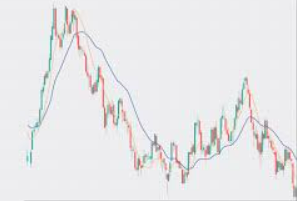
Charlie Brooks
Mar 25, 2022 09:36

Carry trade is the borrowing or selling of a low-interest-rate financial instrument in order to acquire another with a higher interest rate. The trades will either be short on the lower interest rate currency or long on the higher interest rate currency, with carry trades needing to be maintained for a lengthy period of time utilizing leverage to maximize profits and take advantage of interest rate spreads between the two currencies.
The use of leverage with a broker to increase earnings multiples through interest rate arbitrage is considered a 'risk on' strategy, in which investors consider the current economic environment to be positive for their position or, more importantly, the economic outlook to be positive, supporting an interest rate diverging environment that enhances carry trade returns. The approach is based on an assessment of each country's or financial zone's economic status.
The carry trade has been a particularly popular medium to long-term strategy in the FX sector, with interest rate changes being minimal and the ability to take long-term positions appealing to investors and hedge funds.
Carry trade is essentially all about interest rate differentials and, more significantly, interest rate forecast.
However, care should be used by ordinary investors. While in an ideal world, when political stability is maintained and macroeconomic circumstances are favorable for carry trades, transitioning from a low yielding to a high yielding environment is not always that straightforward.
Economic shocks will be reflected in the forex market, often much faster than in other asset classes.
Furthermore, although central banks have a propensity to give direction for financial markets, ostensibly allowing adequate time to react and position in anticipation of a policy move, certain central banks are less interested in sending instructions than others. A sudden policy adjustment by a central bank has the potential to erode any gains gained via a carry trade on a particular day and potentially result in substantial losses.
Natural catastrophes or conflict may also cause risk aversion, rather than merely a change in policy stance.
In summary, the following are the primary risks associated with carry trade positions:
Geopolitical risk — A political event that affects attitude toward monetary policy and the economic outlook of a certain nation, such as Brexit, sanctions, trade wars, and so on.
FX risk — gains from interest rate differentials negated by exchange rate changes in the carry trade, resulting in losses despite favorable interest rate differentials.
Gearing risk — Losses caused by unanticipated movements exacerbated by leveraged positions, which might result in margin calls or even positions being stopped out by an exchange.
Interest Rate Risk - This becomes more of a risk when compounding interest is included in. Movements in interest rate differentials may have an influence on returns in either a positive or negative way, with a narrowing of differentials resulting in lower-than-expected returns until the next interest compounding period.
Nonetheless, although risk aversion might be a problem for carry trade positions, carry trades can be a wise long-term investment or a trigger to buy/sell any asset.
The most conventional carry trades have been the USD/JPY, NZD/USD, NZD/JPY, AUD/USD, and AUD/JPY, with the EUR/USD emerging as a viable option since the global financial crisis. There are others, such as the Brazilian real and the Turkish Lira, as well as other more volatile exotics, but risk appetite will need to be especially strong, and with some countries less transparent than others, carrying trades into such exotic currencies carries substantial risk. Although these combinations are the most common for carry trades, any currency or currency pair may be deemed a carry trade transaction.
The difference in interest rates between two nations may be the primary driver of one currency's strength over another.
With interest rates at or below 0%, the EUR and Japanese Yen are among the favored financing currencies in today's interest rate environment.
Looking at recent swings in 10-year US Treasury rates, the major shift in attitude towards the US economy and monetary policy outlook has seen the Dollar surge of late, with year-to-date losses all but erased in only a few weeks.
Finding the correct trading platform with the necessary trading tools is critical for individuals wishing to engage in carry trades. HQBroker is one such platform that allows traders to trade FX and CFDs, allowing them to scalp, swing, or take on longer-term positions such as carry trades while leveraging their profits.
Every trader must investigate and comprehend the relevance of carry trades both before and after making a deal. Carry trades and interest rate differentials generate volatility in the FX market, as well as the possibility for a trader to execute a carry trade with a high probability of a positive return.

Mar 25, 2022 09:33

Mar 25, 2022 09:41